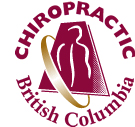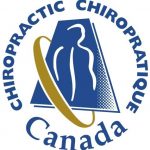Articles
hidden
Patient Responsibility
Posted on May 22, 2013 by Dr Gary
Visit the chiropractor regularly to ensure proper spinal alignment and postural balance.
Have a physical examination every year with your family physician.
Exercise is beneficial to obtaining and maintaining optimal spinal health and is strongly encouraged at the appropriate time.
Be aware of any major life changes (both positive and negative) you are experiencing – as this can be a major source of stress.
Take responsibility for your feelings and take action to understand them. Emotional stress can be very harmful and interfere with the physical well being.
Have a positive and optimistic outlook on life. A positive attitude and lifestyle are key elements in stress management and attaining excellent health. Since stress is both an emotional and physical reaction to change, the better you feel in the body and mind, the better you will be able to deal with the changes in your life.
Your mind and body are connected. When your mind is healthy, your body can better resist illness and maintain wellness and proper structural alignment.
Maintenance of A Spinal Adjustment
Posted on May 14, 2013 by Dr Gary
We all recognize that when the body is injured it takes time for the injury to heal. Each patient must go through a recovery or healing cycle. The restoration process takes time and requires patience by the patient.
After correction of the bone structure to the normal position by the adjustment, the patient does not recover steadily; he or she experiences relapses. It has been observed that these relapses occur at intervals of approximately 3, 7, 14, 21, and 28 days following the first adjustment. Changes must take place in the size of the nerve fibers before perfect performance can take place in the nervous system.
POST-ADJUSTMENT HEALING CYCLE – INITIAL NERVE TISSUE REPAIR
As a general rule, the longer the patient has neglected the correction of the subluxation and allowed the condition to progress, the longer it will take to get well. Other factors unique to the patient may slow progress, but changes resulting from the adjustment are normally apparent. There may be immediate relief of symptoms, or there may be other seemingly unrelated symptoms. Increased sensitivity of the nervous system in some cases, results in a feeling of euphoria; in other cases, there may be a vague temporary feeling of uneasiness or discomfort. These changes are typically restorative and are positive signs of the increased functionality of the central nervous system. Symptoms recede in proportion to the corrections made and the favorable response of the nervous system to those corrections.
These are the short and long-term suggestions for maintaining your spinal health.
Short Term:
The Initial Healing Cycle (6 weeks)
- Avoid strenuous activities and sports that would cause sudden or jarring movements of the head and neck; walking is recommended.
- Rest assists the body in its recuperation; so be sure to manage your schedule to include rest.
- No massage should be performed on you neck/shoulders until you are advised.
- Avoid putting the head and neck too far back or forward and avoid any jarring situations, which cause the head to move quickly, in any direction.
- Avoid looking up and reaching above your head.
- Feel free to use your head through its normal range of motion, just don’t use it excessively!
Long Term:
The body continues to restore and restructure itself subtly, sometimes up to years, following the initial corrective care. It is of the utmost importance that you retain the correction through regular chiropractic check-ups. We strongly suggest that you adhere to the prescribed schedule of follow-up visits. Symptoms are not always a sign of a misalignment; they are also a sign of healing, and the absence of symptoms does not always indicate the body is in alignment.
- When washing hair at the salon – support neck with a towel or sit face forward into the sink.
- When visiting a dentist – ensure you neck is supported (i.e.: towel) and bring head forward when possible.
- Sleeping – your pillow should support the head and neck in its natural position. DO NOT SLEEP ON YOUR STOMACH; position yourself on your back or your side with legs flexed. Use an extra pillow to support your legs.
- Don’t use the armrest of the couch as a headrest while watching TV or reading.
- Don’t read in bed or fall asleep in a sitting position (plane or auto).
- Always bend at the knees when picking anything up. This will minimize back strain. When lifting, keep your back straight, hold the object close to you, and let your legs bear the strain.
- For a shoulder-check, or backing up your car, turn your shoulders as well as your neck to decrease the strain.
- Cross your legs at the ankles. Crossing at the knees could aggravate an existing back condition and interfere with circulation.
- Don’t use your shoulders and head to support a phone.
- Your mattress should be firm but not hard.
- Should you find yourself remaining in the same position for an extended period of time (i.e.: driving, reading, deskwork) it is advisable to allow yourself at least 60 seconds of conscious relaxation periodically.
- Try to set aside time each day for complete mental and physical relaxation.
- When rising from a lying position, turn on your side and use your arm to assist yourself into a sitting position. Swing your legs forward as the body rises.
- Do not use your head as a lever when you turn over!
- Watch your posture – Stand Tall, Sit Tall, Sleep Tall, and Think Tall.
It is important that you complete the course of treatment here. By continuing to practice these recommendations at all times, you will realize the very best healing results and prevent future problems from developing. Those patients that have committed themselves to this process have experienced excellent, long-term results.
It is recommended that your see your family physician annually for a complete physical examination. Preventative screening procedures scheduled by your physician are very important to your overall well being. Examination of the musculo-skeletal system may not detect other conditions.
BE ALERTED TO POSSIBLE CHANGES
After an adjustment, you might experience a variety of changes within your body. These changes are due to modification of the nerve supply and the normal healing response of the various tissues. The diversity in the type of changes is due to the different nerves affected in each individual case. These checks determine that the neurological integrity is favorable and that the body’s balance is maintained. Symptoms can also be a positive sign that healing is taking place. In order to heal, the body must go through different cycles of repair, which very often express themselves in some of the following ways:
- The one leg might feel longer.
- Dizziness or light-headedness, possible headaches may occur.
- Cold-like symptoms (runny nose and sinuses draining).
- Different muscle stiffness in other areas of the body.
- Pain in the area of an old injury.
- Tingling sensations as circulation improves.
- Digestive changes (including mild diarrhea or constipation).
- Fatigue (you may feel tired after an adjustment. The best response to this is to rest or sleep). Don’t do too much.
- The primary symptoms disappear.
You do not need to experience these symptoms to experience healing. However, if they do occur, do not be concerned, as they are common experiences of a healing response.
As the nerves heal, these and many more positive changes could show up in your body. Don’t be concerned but please let us know so we are able to monitor your case carefully. Remember, it takes time (sometimes months to years) for nerves and other tissues to expand to their normal size and heal completely. Healing is an individual response dependent on external and internal factors. During the initial healing cycle, a weekly check is recommended. If the adjustment is stable, future checks are required at progressively longer intervals. Once you have reached the level of care which requires maintenance visits, please be sure that your check-ups are no more than 6 months apart.
Our lives are stressful. These stresses occur on many levels, physical, emotional, chemical, and mental. This may cause the subluxation to reoccur. For this reason, you can prevent or slow the process of deterioration and degeneration by looking after yourself. Our true nature is to heal and be well! This can be accomplished through preventative maintenance care, which is a positive step you can take to improve the quality of your life. The success of your treatment is directly related to your participation! It is essential that you fully participate by following the recommendations and guidelines provided to you by this clinic, and the other health care providers on your team. If you are not sure what to do, please ask!
Most problems are manageable as long as you are willing to take responsibility for the changes that will be needed. Remember…..It all takes time!
The Relaxation Response
A complete mind-body relaxation every day can break the stress circuit and contribute to spinal health. Systematically tensing and releasing your muscles compensates for the stress arousal state. This enables the body to rest and recharge.
- Lie down on a comfortable surface.
- Breathe deeply, slowly, and fully with your belly.
- Contract the muscles of your feet. Hold. Release.
- Then do the same thing with your legs, your hips, your belly – and the rest of your body, all the way to the top of your head.
- When you have squeezed and released every segment of your body, squeeze all your muscles at once as you exhale. Hold. Release.
- Let your whole body sigh. Relax and rest.
Attitude
Remember that none of this teamwork will do any good if you are secretly betting against your own team. Talk health to yourself. You’re the coach.
Visualizing a Healthy Spine
Sit or lie in a comfortable, quiet place. Breathe deeply and slowly in and out of your belly. Let your whole body sight out any tension. With your eyes closed, picture all the muscles and joints of your spinal column exactly how you would like them to be free of pain, relaxed, strong, flexible or whatever you wish. Then picture yourself doing something. Imagine your body moving exactly as you want it to move and feel. See yourself as graceful, powerful, and lithe. Keep this “feeling picture” in your mind’s eye, where you can look at it and frequently visualize the feeling in your body.
Spinal Traction
Posted on May 12, 2013 by Dr Gary
Spinal traction with the Triton DTS provides safe, effective, cost efficient, non-surgical relief from back and neck pain.
It can be helpful for people with herniated intravertebral discs (IVD), degenerative disc disease (DDD), facet syndrome, sciatica, post-surgery patients, & spinal stenosis.
The way spinal traction works is to restore proper function to intravertebral discs. This is accomplished by producing a suction force inside the IVD that brings blood, oxygen, water, & nutrients into the IVD that helps the body to heal itself.
Traction treatment is not for people who are pregnant, have severe osteoporosis, severe obesity, severe nerve damage, or have had spinal surgery with instrumentation.
REGULAR OFFICE HOURS
Monday: 9AM - 5:30PM
Tuesday: 10AM - 6PM
Wednesday: 9AM - 5:30PM
Thursday: 10AM - 6PM
Closed Friday, Saturday and Sunday



